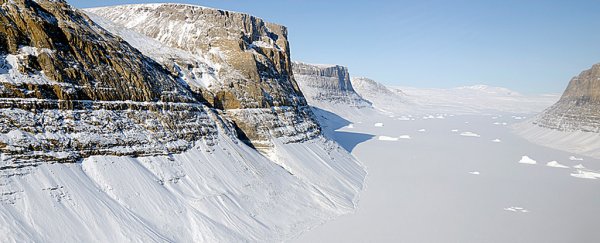Scientists have found evidence pointing to what looks like the world's largest canyon, hidden under ice in the Antarctic.
A team of researchers led by Durham University in the UK found the massive canyon by analysing satellite data of the ice sheet covering Princess Elizabeth Land (PEL) in East Antarctica. While not visible to the naked eye, faint traces of the subglacial landscape can be detected in satellite imagery. If its existence can be verified by direct measurement, the canyon is a major geological discovery.
"Our analysis provides the first evidence that a huge canyon and a possible lake are present beneath the ice in Princess Elizabeth Land," said lead researcher Stewart Jamieson. "It's astonishing to think that such large features could have avoided detection for so long."
The landscape indicated by the satellite data suggests the canyon system in its entirety is approximately 1,100 kilometres in length (683 miles) and is as deep as 1 kilometre (0.6 miles) below sea level in places. In addition, a discrete feature measuring 140 x 20 kilometres (87 x 12 miles) is thought to be a massive deep-water lake connected to the canyon.
One of the reasons the canyon may have eluded detection for so long is that there's very little scientific data on the thickness of the ice sheet under which the chasm is buried.
"This is a region of Earth that is bigger than the UK and yet we still know little about what lies beneath the ice," said Jamieson. In fact, the bed of Antarctica is less well known than the surface of Mars."
The researchers think that the canyon system was carved out by the flow of water, possibly so long ago that it existed before the ice sheet grew over the top of it. Alternatively, it's possible the flow has been eroding at the ice since after the sheet formed.
In addition to using satellite imagery, the researchers detected small sections of the canyon using aerial radio-echo sounding data, bouncing radio waves off the rocky landscape underneath the ice. Further radio-echo sounding measurements over the entire canyon area will now be performed to confirm whether their hypothesis is correct – which could have greater implications far beyond the achievement of having found the world's biggest canyon.
"If we can gain better knowledge of the buried landscape we will be better equipped to understand how the ice sheet responds to changes in climate," said Jamieson.
The findings are reported in Geology.
